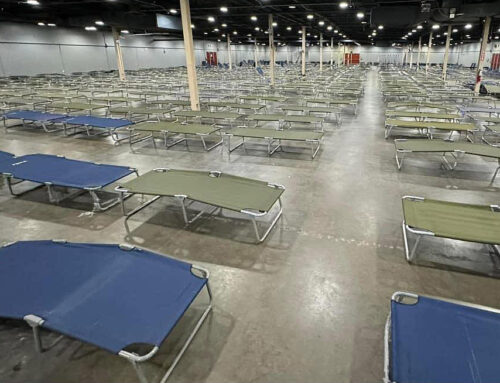Marty Macon remembers the Next Door restaurant at Kingsley and Audelia, where kids ate free on Sundays. She remembers the Northlake Bakery – “Everyone went to the Northlake Bakery,” she says with a laugh, “even people from Highland Park.” And she remembers the others, the hardware store and the gift and specialty shops, all gone now.
And she misses them.
“It was so much fun to shop here,” says Macon, a 16-year Lake Highlands resident. “But I don’t know what happened. Everybody in Lake Highlands loves to shop, and they especially love to shop in the neighborhood at stores that have the Lake Highlands Wildcats sticker.”
That’s the question that neighborhood residents have been asking for more than a decade. Lake Highlands might have some of the most impressive demographics in the city, comparable to the Park Cities and the ritziest parts of Plano, but in the 1980s and 1990s that didn’t mean a thing to many regional and national retailers and to the real estate developers they worked with.
This area suffered twice: from a perception problem, in which those favorable demographics were overwhelmed by retailers’ fear of the “inner city”; and by aging and worn-out shopping centers that didn’t meet retailers’ current needs and were costly and difficult to renovate.
But maybe, just maybe, all that may be changing, and Marty Macon and her neighbors may get some of their stores back.
“The whole inner-city movement is big across the country, and just not in Dallas,” says Ian Pierce, a spokesman for The Weitzman Group, one of the leading commercial real estate firms in the Southwest.
“There are all sorts of possibilities now, built around the concept of urban retail centers.”
Out of the past / Alan Walne has represented Lake Highlands on the City Council for five years. The two biggest issues during that period, he says, were actually related – the area’s substandard apartment housing, and its lack of high-quality retail development. Drive around Lake Highlands, and the two seem to go hand in glove, producing dead zones – regardless of what else is there – wherever they intersect. Just look at some of the retail around Audelia and Kingsley and Northwest Highway and Ferndale.
“I don’t think retailers and developers could see the forest for the trees,” says Walne, who grew up in Lake Highlands and also remembers the Northlake Bakery, as well as buying clothes at the Dad & Lad’s a couple of doors down.
“I don’t think they realized the potential of this area.”
It wasn’t always this way. Until the late 1970s, Lake Highlands residents didn’t have to drive across Central Expressway to buy much of anything. There were women’s clothing stores, jewelers, card shops, even dime stores such as the TG&Y at Northlake. But all that changed over the next decade or so.
First, the retail business changed, as independents and small chains such as Dad & Lad’s gave way to superstores such as Wal-Mart and Home Depot. As part of that trend, the average size of most retail outlets increased dramatically, with grocery stores twice as big as they were 30 years ago and a stand-alone drug store going almost 15,000 square feet. But almost all of the shopping centers in Lake Highlands, such as Northlake, were built for the 30,000-foot supermarkets that were typical in the 1960s.
In fact, Northlake’s problems mirrored the rest of the community. It lost its anchor when Tom Thumb moved in search of a larger store. It lost tenants as traffic fell off after Tom Thumb left. Then, in order to fill the space and bring in cash, it leased to a variety of non-retail operations – a state driver’s license bureau, a child care center, an injury rehabilitation clinic – that generated even less retail traffic. When Kathy Dickey, Christon’s senior vice president, started putting together the package to redevelop Northlake, it was only 62 percent full.
And that was just the beginning of her problems. Buildings had to be torn down to make room for a 63,000-foot Albertson’s and an accompanying convenience store and gas station. Tenants had to be moved to accommodate the work, leases had to be changed or bought out, and everyone had to endure the six months of construction.
Meanwhile, Lake Highlands was also changing. The apartments that went up didn’t, of themselves, alter the nature of the community. When many of the apartments north of Northwest Highway in and around Fair Oaks and Park Lane were built in the 1970s, they attracted renters not all that different from those that still move in and out of the Village. But when many of the Lake Highlands-area properties were caught in the banking and real estate scandals of the 1980s, they fell into disrepair and decline.
Developers and retailers pick their territories by drawing circles on a map, usually of 1-mile, 3-mile, 5-mile and 10-mile radiuses, and then comparing the demographics in the radius with their typical customer. But draw a three-mile circle around Kingsley and Audelia or Skillman and Abrams, and you include parts of some of the most depressed apartment communities in the area. That means retailers who use that radius, usually specialty stores such as the Gap or Banana Republic who make their decisions in offices far away, ignore the demographics that match their customers because they are frightened away by those that don’t.
Walne is convinced this absentee decision-making played a crucial role in the decline of Lake Highlands’ retail base, and that only local people such as Christon, who raised his family in Lake Highlands, have the necessary perspective to make these projects work.
By the early 1990s, meanwhile, vacant storefronts in Lake Highlands were all too common (occupancy rates were as low as 50 percent at some strip centers), and it became harder and harder to lure retail that wasn’t pawnshops, dollar stores and bingo parlors.
“This area has been neglected for a long time,” says Christon, whose company helped redevelop part of the Lakewood Shopping Center before taking on the Northlake job. “And it shouldn’t be. These aren’t easy deals to do, but they can be done.”
A different mindset / Sometime in the mid-1990s, everything started to change. One of the first signs that something was up came when Wal-Mart opened a Sam’s at Greenville and Park Lane, and Target followed with a store at Cityplace and a Super Target at Skillman and Abrams. These locations seemed to defy the wisdom of the five-mile radius.
“And not only are we going to have to do more stores like that, but so is the entire industry,” says Target spokeswoman Carolyn Brookter. “It’s just not possible anymore to grow only by building in the wide open spaces. We have to look for opportunities elsewhere, of which they are just one example.”
What has happened is that the cost of land in those wide-open spaces has increased significantly, to as much as $30 a square foot in Dallas’ northern suburbs. By comparison, that’s about twice as much as prime space in Lake Highlands. In addition, many outlying areas, because of their rapid growth, are wondering if they’re growing too quickly and contemplating limits to that growth.
Finally, consider that many of those suburban areas are overbuilt or getting close to it, says Ed Fox, the director of the JCPenney Center for Retail Excellence at the Cox School of Business at SMU.
“In general, the world is over-stored,” Fox says. “What happens is that new retail follows new building, so that then you have more stores than the area can support.”
Which is what Target learned. If the suburbs are overbuilt, where can retailers and developers find high-end customers who don’t live in the suburbs?
Can anyone say Lake Highlands?
“This is a charming, wonderful neighborhood,” says Nancy Kane, a regional marketing manager for Starbucks, which has opened two stores in Lake Highlands this year.
“These are the places we like to be. The people are involved in their community, in their schools, and in their churches. Our customer base drives us to areas like that.”
Hence the seven-figure redevelopment at Northlake, as well as a host of smaller projects. Retailing has changed too much in the past two decades to expect to see a men’s clothing store there, but NorthPark and Town East are no longer residents’ only options.
Walgreen’s is reportedly opening one of those 15,000-foot stores at Northwest Highway and Jupiter, in the location of a former JoJo’s restaurant. Occupancy rates are up throughout most of the area, even at previously hard-to-fill centers such as the one in the 9000 block of Skillman just north of Royal Lane. And, says Walne, negotiations are underway to bring several large retailers to the area, including a new tenant to the center at Kingsley and Audelia.
“This is something we’re glad to see, but that is long overdue,” says Pam Massor, manager of the Dutch Art Gallery, which has been in Northlake for 35 years. “This always used to be a good neighborhood place, and the renovation is going to make it that way again.”





